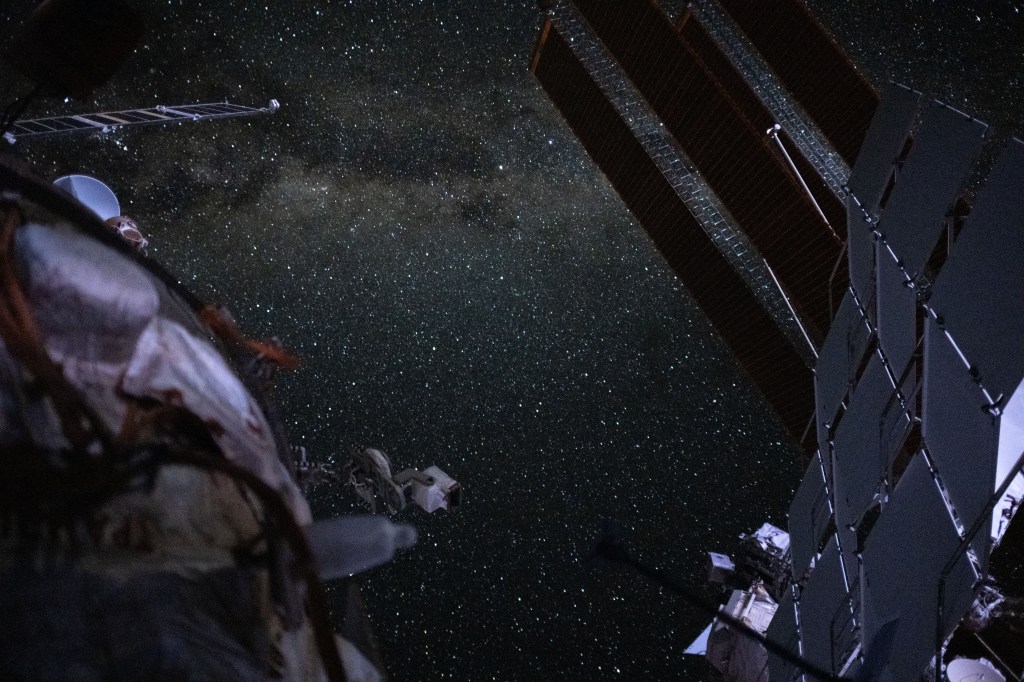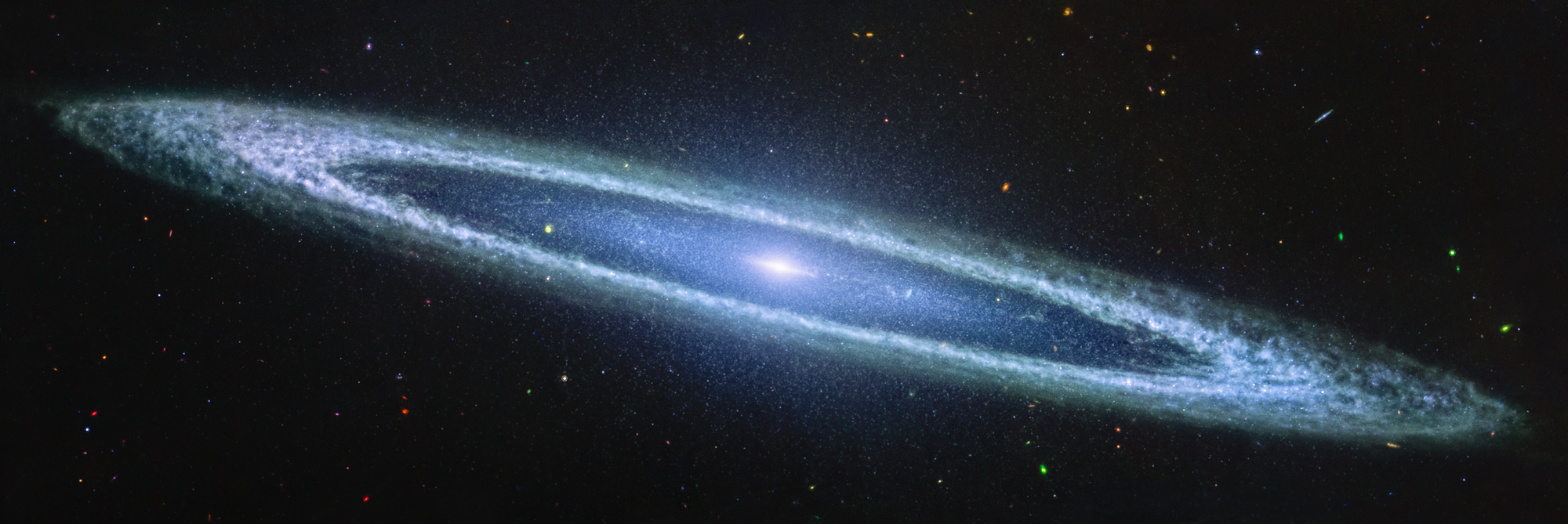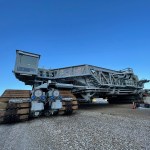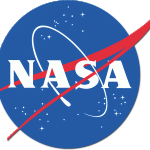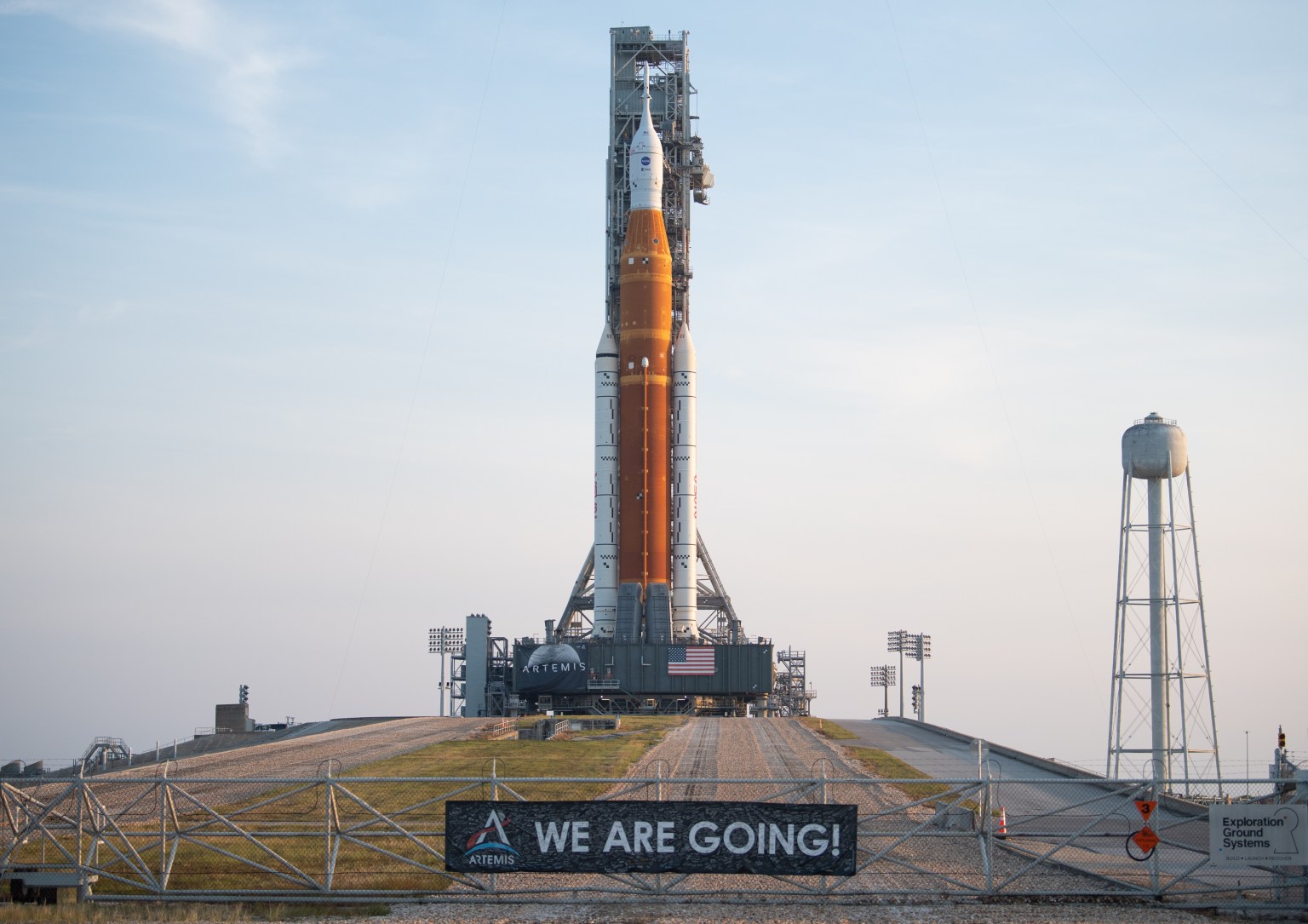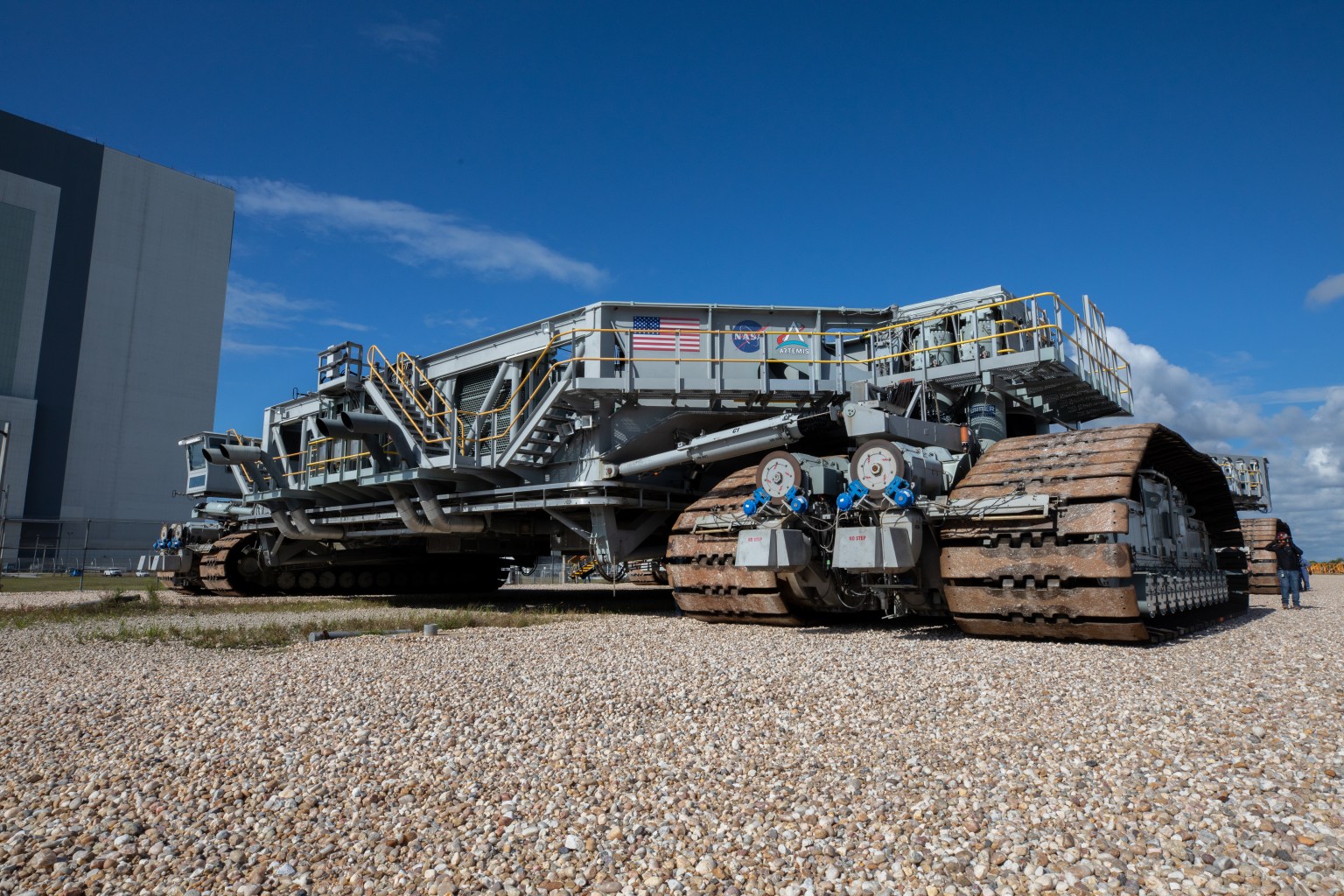
The Crawlers
A pair of behemoth machines called crawler-transporters have carried the load of taking rockets and spacecraft to the launch pad for more than 50 years at NASA’s Kennedy Space Center in Florida. Each the size of a baseball infield and powered by locomotive and large electrical power generator engines, the crawler-transporters stand ready to keep up the work for the next generation of launch vehicles to lift astronauts into space.
The crawlers are unique in the world, having been built in 1965 to move the massive Saturn V rocket from Kennedy’s Vehicle Assembly Building to Launch Complex 39. After the Moon landing and Skylab programs ended, the crawlers continued their work, taking space shuttles to their launch pads for 30 years.
With the shuttle fleet retired in 2011, the crawlers are envisioned as critical elements of future launch operations at Kennedy. Crawler-transporter 2 (CT-2) is integral to the Artemis missions, sending the first woman and first person of color to the Moon.
Fun Facts:
- Weight: Approximately 6.6 million pounds (or the weight of about 15 Statues of Liberty or 1,000 pickup trucks).
- Height: Varies from approximately 20 feet to 26 feet, based on the position of the jacking, equalization and leveling cylinders.
- Load Capacity: Able to transport 18 million pounds (or the weight of more than 20 fully loaded 777 airplanes).
- March 1963 – Fabrication began on the crawler-transporters in Ohio.
- Jan. 23, 1965 – The crawler moved under its own power for the first time.
- Aug. 26, 1967 – The first Saturn V rocket was moved to the launch pad for the unmanned Apollo 4 mission.
- May 1, 1979 – A crawler transported space shuttle Enterprise, with external tank and two inert solid rocket boosters, to Launch Pad A for fit check.
- Nov. 16, 2011 – Moved Space Launch System’s (SLS) mobile launcher from the park site beside the Vehicle Assembly Building (VAB) to Launch Pad 39B.
- June 28, 2019 – CT-2 carried the mobile launcher from the VAB along the crawlerway to Launch Pad 39B for Verification and Validation (V&V) testing of ML and pad systems.
- March 17 – April 26, 2022 – CT-2 carried the SLS with the Orion spacecraft atop on the mobile launcher from the VAB to Pad 39B for the Artemis I wet dress rehearsal tests ahead of launch.
- Nov. 3 – Dec. 9, 2022 – CT-2 carried SLS with the Orion spacecraft atop on the mobile launcher from the VAB to Pad 39B for the launch of Artemis I, which took place on Nov. 16. CT-2 carried the mobile launcher back to the VAB and later on to a parking location at Kennedy, where modifications and upgrades are being made on both ahead of the Artemis II crewed mission.
- March 29, 2023 – Guinness World Records presented a certificate to teams with EGS and Kennedy leadership, officially designating CT-2 as “the heaviest self-powered vehicle.”





